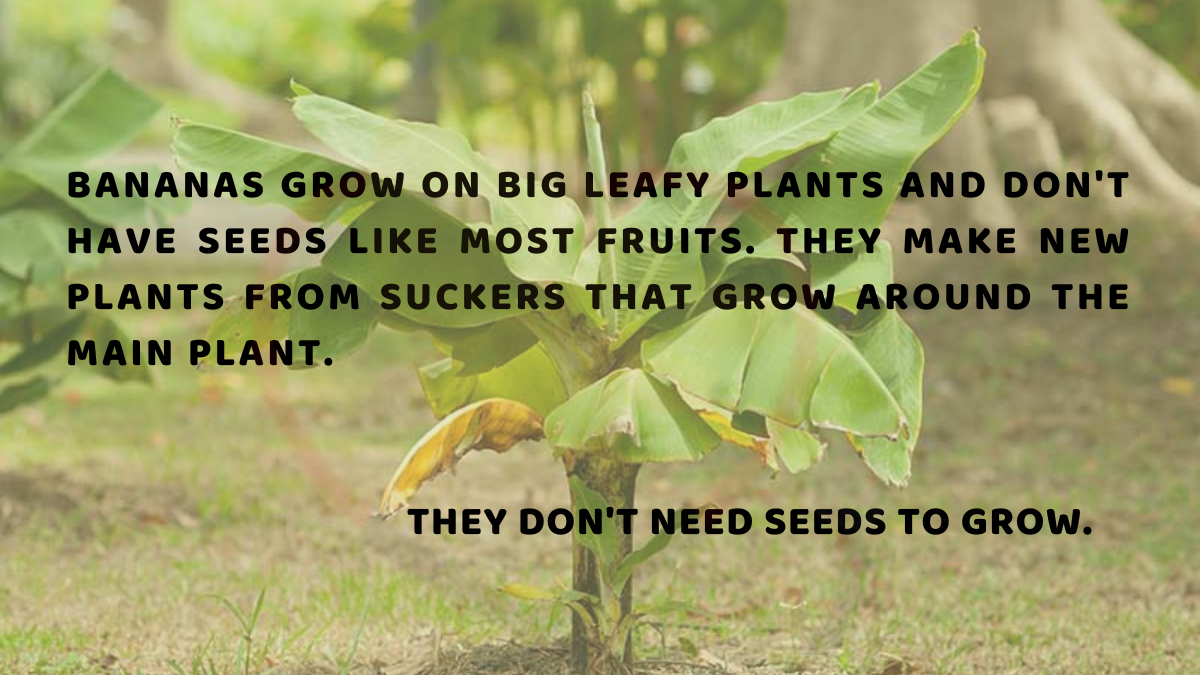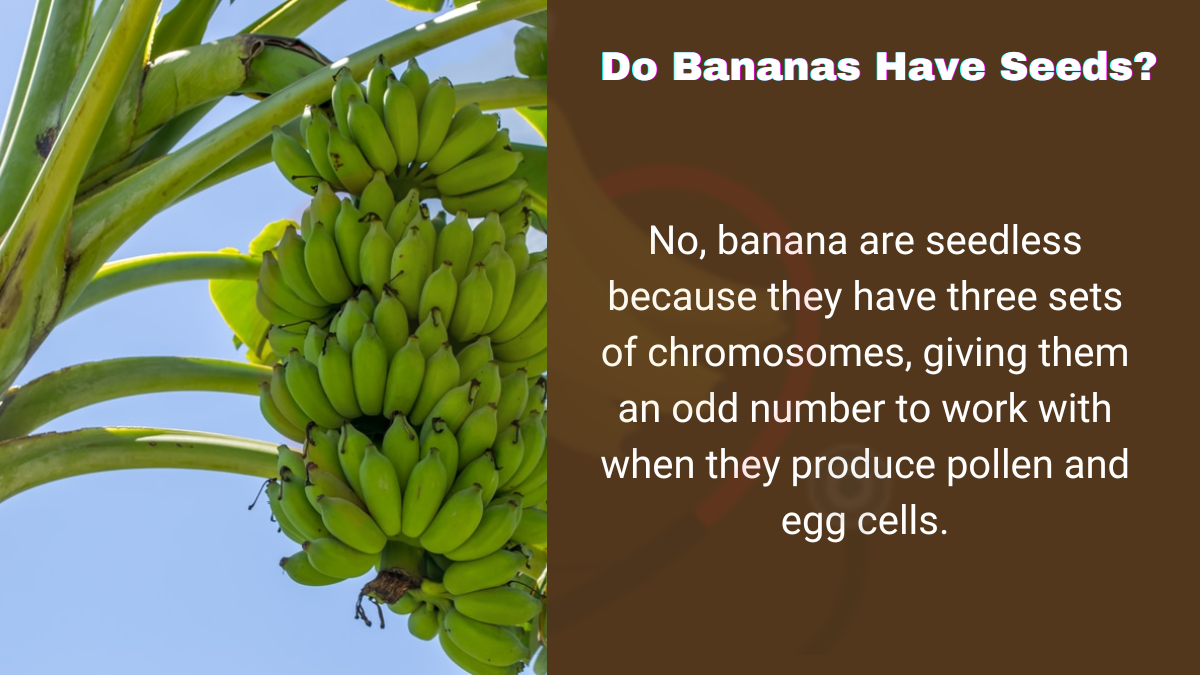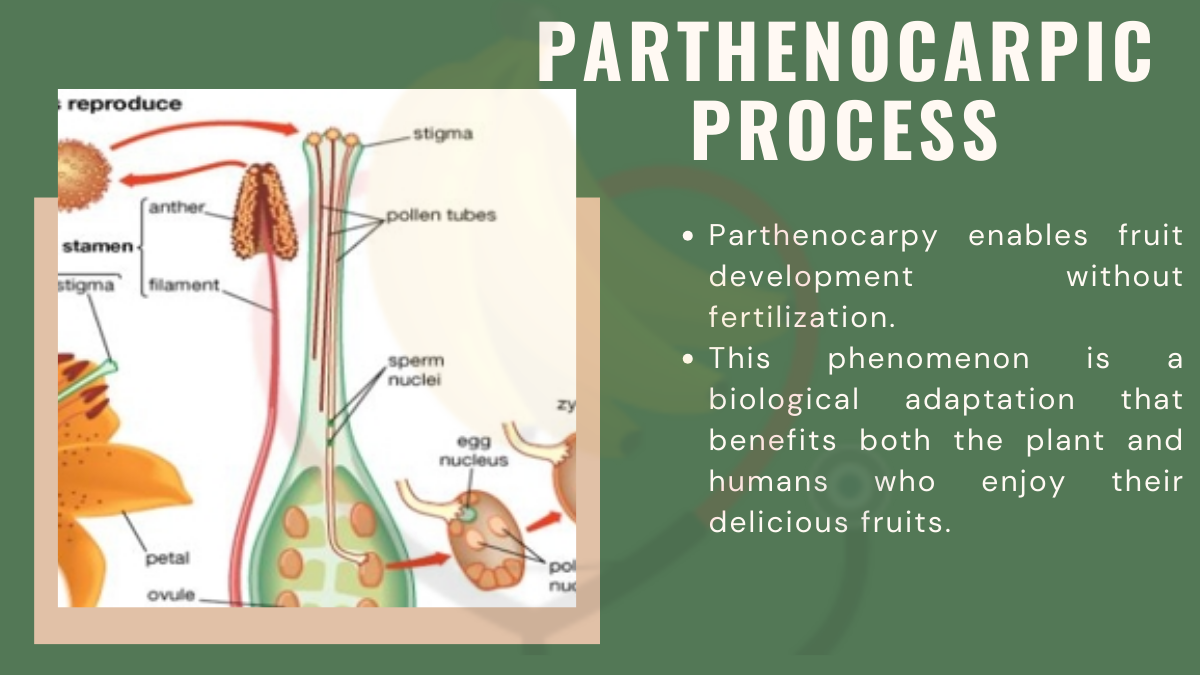Bananas are one of the most popular and widely consumed fruits around the world.
Bananas grow on big leafy plants and don’t have seeds like most fruits. They make new plants from suckers that grow around the main plant.
They don’t need seeds to grow. [1]
In this article, we’ll delve into how do bananas reproduce without seeds, exploring the mechanisms behind their seedless nature and shedding light on the intricate processes that allow these delicious fruits to multiply.

Do Bananas Have Seeds?

1: Seedless Wonder
Unlike many other fruits, bananas do not contain the familiar hard seeds that you might find in berries or apples.
This unique trait has led to their popularity as a convenient and mess-free snack. But how exactly do bananas manage to reproduce without seeds?
2: Parthenocarpic Process
The secret lies in a process called parthenocarpy. [2] Parthenocarpy enables fruit development without fertilization.
Bananas undergo a modified form of this process, which allows them to develop without seeds.
This phenomenon is a biological adaptation that benefits both the plant and humans who enjoy their delicious fruits.

Role of Polyploidy
Polyploidy, [3] the presence of multiple sets of chromosomes in a cell, is another crucial factor in banana reproduction.
The common Cavendish banana, for example, is a triploid, meaning it has three sets of chromosomes.
This genetic peculiarity is a result of the fusion of different species, and it plays a pivotal role in the development of seedless bananas.
Banana Reproduction
1: Flowering Stage
Bananas undergo a series of developmental stages, including flowering.
The flowers of cultivated bananas are often small and not fully functional. This makes traditional fertilization less likely to occur.
2: Fruits without Fertilization
As the banana fruit starts to develop, parthenocarpy kicks in.
The fruit begins to form without the need for pollen and fertilization.
This attribute is highly desirable in agriculture because it ensures consistent fruit production without the need for pollination.
Cultivation and Benefits
1: A Boon for Agriculture
The seedless nature of cultivated bananas, such as the Cavendish variety, offers significant advantages for farmers and consumers alike.
With no seeds to contend with, bananas are easier to peel and enjoy, making them a convenient snack choice.
2: Vulnerabilities in Monoculture
However, the reliance on a single, widely cultivated variety of banana comes with risks.
The lack of genetic diversity makes the crop vulnerable to diseases, as was the case with the once-dominant Gros Michel banana that was almost wiped out by Panama disease.
Challenges and Sustainability
Need for Genetic Diversity
To ensure the longevity of banana cultivation, scientists and farmers are working on creating genetically diverse varieties that are resistant to diseases.
This would help prevent the catastrophic consequences of relying solely on a single type of banana.
Genetic Modification and Ethics
The debate over genetic modification in bananas raises ethical questions.
While it could potentially create disease-resistant and more sustainable varieties, concerns about unintended consequences and the alteration of nature’s design persist.
Bananas’ ability to reproduce without seeds is a remarkable example of nature’s ingenuity.
Through parthenocarpy and the intricate mechanisms of polyploidy, bananas have found a way to thrive and provide a popular fruit enjoyed globally.
As we navigate the challenges of monoculture and genetic modification, it’s crucial to strike a balance between innovation and respecting the natural world.
FAQs About Seedless Bananas
Are seedless bananas genetically modified?
No, seedless bananas are not genetically modified. They naturally develop through a process called parthenocarpy, which allows fruit development without fertilization.
Are there any bananas with seeds?
Yes, wild banana varieties often have seeds. However, the cultivated bananas commonly found in grocery stores are seedless due to their unique reproductive process.
Can seedless bananas reproduce on their own?
No, seedless bananas cannot reproduce on their own. They require human intervention for propagation through methods like tissue culture or pups, which are offshoots from the base of the parent plant.
Are there health benefits to eating seedless bananas?
Yes, seedless bananas offer the same nutritional benefits as seeded bananas. They are rich in potassium, dietary fiber, and essential vitamins.
Could seedless bananas become extinct?
The risk of seedless bananas becoming extinct is low due to ongoing efforts to cultivate disease-resistant varieties. However, maintaining genetic diversity remains a critical concern for long-term sustainability.

